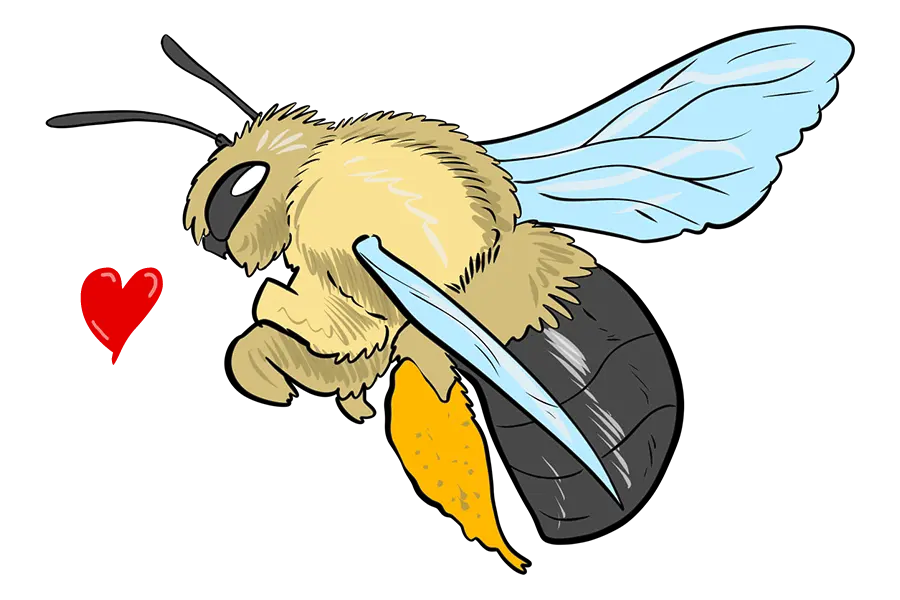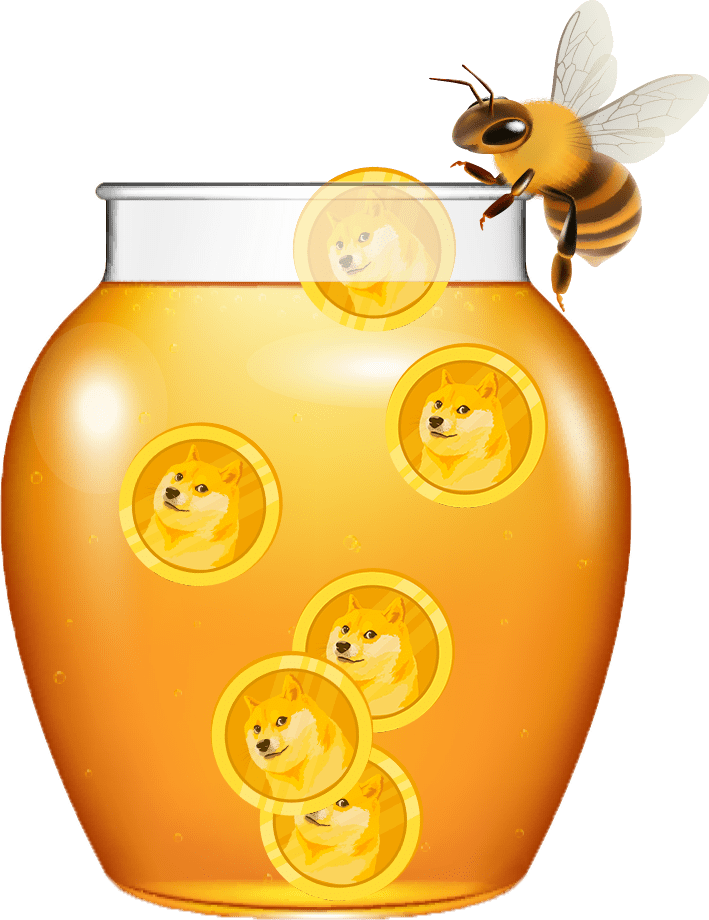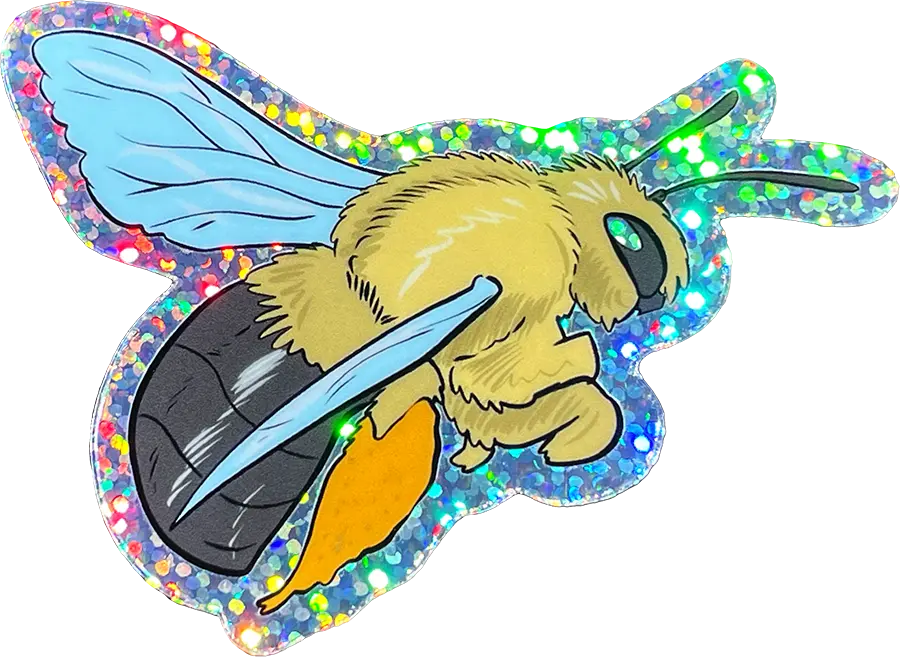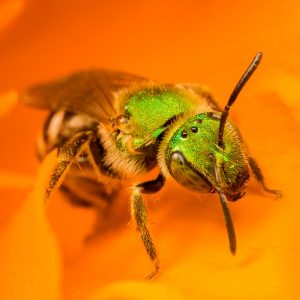 Curious bee facts and tidbits
Curious bee facts and tidbits
There is an astonishing variety in the way bees live their lives. Some never see their offspring, whereas others pass on what they've learned from generation to generation. Some burrow into sandstone, when others use snail shells as homes to house the next generation. Some bees even make their own perfumes from rainforest orchids!
Bees also have senses that we have a hard time imagining. They can see polarized light from the sun, helping to guide them back home after their foraging trips. With their antennae, they can detect directional scents, noises and wind currents, as well as determine temperature and even taste what they touch. Not to mention antennae are also used to communicate with other bees!
A collection of curious facts about bees, including historical notes, unusual bee habits, interesting pollination facts, and more
Bees make our world (and food) possible
Around 85% of the roughly 369,000 species of flowering plants rely on pollination by animals (bees are animals too)! Although some of our staple foods come from wind-pollinated plants, we can thank bees for almost all of our most nutritious foods, as well as a great deal of added beauty and diversity in the world.
Gardening bees
When flowers are scarce, some bees have been known to bite small holes in leaves, which surprisingly prompts plants to flower as much as a month earlier in the season.
Buzz pollination
Bumble bees—and a few other types of bees, including digger bees—do something special known as "buzz pollination" literally shaking hidden pollen from certain flowers, such as tomatoes and blueberries. Honey bees can’t do this!
Tomato specialists
Bumble bees are so good at pollinating tomatoes that a commercial bumble bee pollination industry exists, breeding bumble bees in great numbers and mailing colonies to growers. Sadly, this practice has spread non-native bumble bees and their diseases worldwide, wiping out native bumble bees.
Devoted mother bees
Bumble bee queens emerge from hibernation in early spring. After gathering nectar to store in a waxen pot, a queen lays her first eggs on a mound of pollen and wax. She keeps these warm by incubating them with her own body (shivering her flight muscles to generate heat).
Pictures in bee minds
In studies with spheres and cubes, bumble bees have shown that they can recognize an object by sight, which they only previously learned about by touch (and vice versa). This suggests that bees have internal representations of objects in their minds.
Innovative learners
Bumble bees can learn from other bumbles, even improving on what they see, showing that they understand the goals behind tasks. Since bumble bee generations overlap, bumbles even pass along knowledge of new skills across generations.
Flying mice
The Patagonian bumble bee is a striking bright orange and black bee sometimes called the ’flying mouse’. Female queens can be up to 1.6 inches (4cm) in size! Sadly, it is critically endangered, almost completely disappearing in only a few years after the introduction of European buff-tailed bumble bees.
Well-groomed bees
Female bumble bees collect pollen by brushing pollen grains out of their hair and into their pollen baskets using a specially adapted comb on their foot.
Bee-ing messy is good
Orchard (mason) bees are such industrious and yet ’messy’ pollinators that several hundred can do the work of several thousand honey bees.
Snail shell homes
European two-colored mason bees choose to lay eggs in abandoned snail shells. They create several cells within each shell, using chewed up leaf material for walls. After laying their eggs, they carefully position the shell with its opening down, then cover it with stems, twigs, or leaves as camouflage.
Bees love deserts
Deserts are bee biodiversity hotspots worldwide! In the U.S., the highest diversity of native bee species are found in the Desert Southwest. Many desert bee species have evolved tight relationships with their flowers, with bees syncing their emergence precisely. Some desert bees have been shown to use moisture as a timing cue.
Sandstone bees
Some digger bees choose to nest in sandstone. Even though sandstone is soft by rock standards, it grinds down their mandibles, so they reuse the same burrows through generations, extending these over time. Although solitary, their nest areas include hundreds of individual burrows clustered near one another, presumably benefiting from a form of communal defense.
Carpenter bee love
Valley carpenter bee males have been called flying teddy bears! In Arizona these stunning golden bees have been spotted gathering in small groups on prominent hilltops and ridgelines, where they release rose-scented pheromones to attract partners 🌹🐝❤️🐝
Sneaky cuckoo bees
Around 15% of bee species are ’cuckoo’ bees, sneaking into other bees’ nests to toss in their own eggs.
Cellophane bees
Female bees line the walls of nest cells with a water-resistant coating, so that young bees stay safe in their cocoons underground, even when it rains.
Orchid bee love
Staggeringly beautiful jewel-like bees! To attract mates, males collect fragrant compounds from rainforest orchids, mixing their own unique perfumes from up to 80 different scents from the forest.
Bee orchids
These flowers mimic the smell, texture and shape of female bees, in order to be pollinated by amorous males. The orchids deposit flowering structures on the bees, often making them look as though they have bright yellow antlers.
Honey bees recognize human faces
"For bees, faces are just a really strange looking flower."
Mathematical honey bees
Studies show these bees can count to 4 as well as understand the concepts of zero, addition, and subtraction.
A world of smells
Amazingly, all insect pollinators have “smelly feet”, helping them figure out if a flower has been visited recently (it’s only worth landing if there’s nectar!) They also know the “recharge times” of specific types of flowers, so they can gauge exactly when their next nectary sip will be ready.
Fluffy vegetarians
Bees are fluffy vegetarian wasps who switched to feeding their young pollen (just like wasps, adult bees still drink nectar). Wasps are much less fluffy than bees, though they’re still pollinators. The more fluff, the more pollen can be gathered!
Feathery bees
The fluffy hairs on bees’ bodies are feathery (plumose), with many hairs branching off each one. This is what truly separates the bees from their wasps ancestors, whose hairs are straight. The bees’ feathery hairs are uniquely adapted to their pollen-centric lifestyle.
Nectar & pollen
Nectar is a delicious, energy-laden carbohydrate drink for bees, and pollen is an amino acid-laden, protein-rich source of food for their young. Nectar also often includes proteins, amino acids and minerals.
Pollen sparks flying
When bees fly, they build up a slightly positive electrostatic charge, which means they pull negatively charged pollen grains towards them as soon as they land on a flower.
Thousands of flowers
Depending on the availability of flowers (and the weather), a bee may pollinate as many as ten thousand flowers in a day.
A bee for every flower
Some bees have long tongues, which can reach deep into long flowers, whereas other bees have short tongues, restricting their flower choice (although some ’cheat’ by biting into the bases of tubular flowers).
How far to fly?
Tiny desert bees might fly only 150 feet (50 meters) from their nest to a flower. Other bees might travel between 2–4 miles or even as far as 9 miles in the case of honey bees.
Who has no father, but has a grandfather?
A male bee! He also has no sons, but may have grandsons. This is because bees are haplodiploid: female if they have two different copies of their sex-determining gene, or male if they have only one copy. Bees are also male if their two copies match, which is more likely in smaller populations with less genetic diversity.
Multi-faceted eyes
Bees have two large compound eyes with receptors for ultraviolet, green, and blue wavelengths (so they can’t see red, but they can see things we cannot). They also have three tiny eyes on top of their heads known as ocelli, which are primitive circular eyes that work as light sensors, helping orient bees to the sun.
Near-sighted bees
A bee’s vision is sixty times less sharp than that of humans, and they only see in detail once they are a few inches away from something. When close to a flower, bees can detect microscopic textures and patterns on petals.
New ways of seeing
Honey bees have “hairy eyes” (hairs spring from between each facet of their compound eyes). These hairs sense wind currents, assisting navigation. Each facet of their eyes is hexagonal too, just like their hive cells!
Ultraviolet vision
Bee vision is shifted towards the ultraviolet part of the color spectrum. Flowers have evolved distinctive ultraviolet markings invisble to us, which act as ’runways’ guiding bees towards their centers. Some stingless bees even add reflective white sand to their nest entraces, creating an ultraviolet signpost guiding them home in deeply shaded forests.
Sun compass
Bees know the time of day by observing the relative position of the sun as it moves across the sky. Bees also use landmarks to help them find they way to and from distant flowers.
To sting or not to sting
Male bees can’t sting, and females have to feel threatened to do so. Although honey bees lose their lives when they sting, all the other types of bees can sting multiple times.
Why do bees buzz?
When a bee moves its wings in flight, the air around begins to vibrate, making a buzzing noise. The faster the wings beat, the higher the buzzing sound.
On bee wings
All bees have four wings, a pair on each side. In flight, each pair is connected by tiny hooks that join the two wings to form one larger wing surface.
Wingbeats
Bumble bees buzz their wings up to 200 times per second. Instead of simply flapping up-and-down, they rotate their wings in a figure-eight pattern.
A second stomach
Bees sip nectar while out and about for energy, but they also bring nectar back home by storing it in a special internal organ known as the honey stomach.
Tiny but powerful brains
With only one million neurons (compared to eighty billion in humans), bees exhibit individuality, plan for the future, learn and make choices, and even spend a fair amount of time sleeping (which helps them form long-term memories).
Early honey hunters
Rock art depicting honeycombs, swarms of bees and honey collecting date to as many as 40,000 years ago. Honey may even be a significant factor in the evolution of our brains.
Ancient beekeepers
The earliest evidence of beekeeping is from around 2400 BC in Egypt. A stone bas-relief depicts people removing honeycombs from cylindrical clay hives and packing honey into pots.
Stingless bees
The ancient Maya tended colonies of stingless honey bees living inside log hives, a practice which continues to this day. Colonies of these bees have been carefully tended for almost four thousand years.
Honey bee settlers
Honey bees first came to America with the colonists from Europe in 1622 (although 14 million years ago, another now-extinct honey bee inhabited what is now Nevada).
Honey bees like it hot
On cool, cloudy days honey bees cluster together for warmth in their hives (they aim for 95°F/35°C)! Unlike honey bees, many native bees brave low temperatures and rainy conditions, even if it means nights spent out on flowers.
Exceptional bees
Honey bees are outliers in the bee world. Huge colonies of social bees are the exception, not the norm. Most bees are solitary, nesting in the ground, in twigs and stems, or in wood.
Honey bees potentially threaten native bees
Honey bee hives house tens of thousands of bees capable of recruiting each other when they find flowers. Coupled with dwindling floral resources, this becomes problematic: 1 hive potentially outcompetes 100,000 native bees for pollen and nectar.
Honey bees are in trouble
Since the 1950s, U.S. managed honey bee hives have declined by over 50%, while at the same time cropland requiring bees has more than doubled. Native bees are in even more trouble though, as they do not have the support of human beekeepers.
A liftetime’s work
The average honey bee produces about 1/12th teaspoon of honey in her lifetime.
A pound of honey
To make one pound, the 50,000 to 80,000 bees who live in a hive at the height of summer travel a collective 55,000 miles and visit more than 2 million flowers.
Sugar composition
Honey is composed of glucose, fructose, and water, along with at least 22 other complex sugars including maltose, sucrose, kojibiose, turanose, isomaltose, and maltulose.
Modern migratory beekeeping
American honey bees are trucked south to pollinate Floridian orange trees or Californian almond trees, before moving north to apple orchards, melon farms, berry patches, and clover fields. In Europe, hives first visit rapeseed fields, before heading to acacia and lime, then to buckwheat fields, and finally to heather.
Ancient migratory beekeeping
In ancient Egypt, special boats would take bees up the Nile from the south, where flowers bloomed earlier in the season, before taking them north later in the season, to gather nectar and pollinate plants there.
Medicinal honey
Since ancient times, honey has been used to treat wounds, since it seals the area and contains small amounts of hydrogen peroxide acting as a disinfectant. Some honeys have more active healing properties than others, such as manuka honey from tea trees in Australia and New Zealand, corbezzolo honey from the mountains of Sardinia, and buckwheat honey.
Vulture bees
A few species of stingless honey bees in the genus Trigona visit fresh carrion, bringing back flesh instead of pollen to the hive, and their gut microbiome is more similar to vultures than to other bees.
Mad honey
When the world’s largest honey bees feed on rhododendrons in the mountains of Nepal and Turkey, consuming their honey results in euphoric and hallucinogenic effects (it is also poisonous).
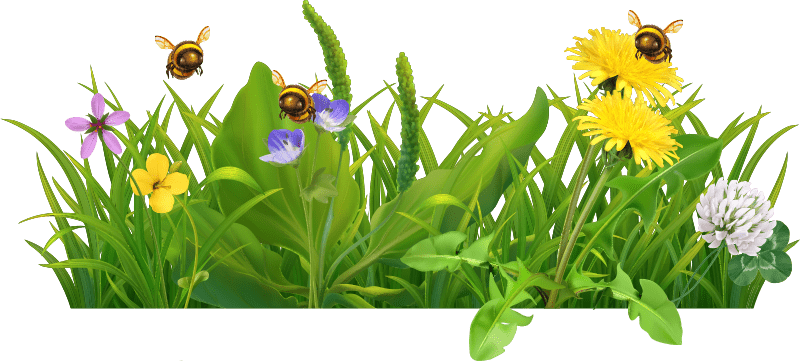
All the Buzz!
An occasional email newsletter with seasonal bee gardening advice, curious bee facts, current bee research, and other bee-related goodness.
I only use your email address to send you occasional bee-related emails (opt-out anytime). Read my full privacy policy.

